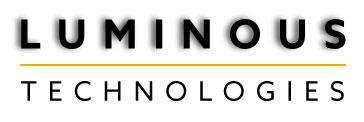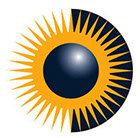OPTICALLY ACTIVE ADDITIVE PROTOCOL
PROTOCOL FOR PRODUCTS USING LUMINOUS TECHNOLOGY MATERIAL WITH THE UV LAMP
Abbreviations:
- LTL-Luminous Technologies Ltd.
- OAA-Optically Active Additive
- DFT-Dry Film Thickness
- WFT-Wet Film Thickness
- Lamp- approved Ultra Violet lamp
- U/V- Ultra Violet
SCOPE
- This protocol is for the use of LTL OAA in products requiring complete coatings coverage in conjunction with the UV lamp for which the OAA has been optimized.
- The purpose of the OAA is to enable quick, non-invasive inspection of large coated areas during the application process, thus reducing inspection time while assuring the probability of good application and coverage. It works by highlighting areas of over and under application as well as giving opportunity for crack detection, holiday detection and hot-work detection.
BACKGROUND
- The OAA is an additive, it is not a paint. The additive is designed to be incorporated into existing paint formulations. The OAA is typically added in a very low concentration (normally less than 1%) to achieve the desired effect and is incorporated by the paint manufacturer into the paint at the time of manufacture.
- Typically the OAA has no effect on product properties but we recommend testing to insure performance. The purpose of the OAA is to aid the inspection of critical areas to be coated and it can be used in a variety of application areas and substrates. The OAA can be supplied in a variety of resin or solvent systems as a paste (including waterborne) for incorporation into paint formulations. The OAA is available in a variety of colors, to enable its incorporation in all coats of a scheme.
SURFACE PREPARATION
- Surface preparation must be in accordance with the paint manufacturer’s recommendations for the coating being applied.
APPLICATION
- The application method must be in accordance with the paint manufacturer’s recommendations for the coating being applied.
INSPECTION
Inspection of the first coat containing the OAA requires the following:
- Normal (WFT) measurements in process
- DFT measurements
- U/V light inspection using the recommended U/V lamp
- U/V light inspection can be performed on wet systems
- The procedure of inspection should follow normal inspection procedures carried out by the inspector.
SHOP PRIMER REMOVAL
- If the OAA has been incorporated into the shop primer, the removal of the shop primer can be detected by shining the UV light on the surface. If the shop primer is still present the OAA will react to the UV light from the UV lamp and its presence can be easily detected. If no reaction is seen it can be concluded that the shop primer has been completely removed. The U/V light will also cause some forms of dust to react and make the presence of some impurities easier to detect. Thus the removal of the shop primer can be very quickly confirmed visually.
FIRST COAT INSPECTION
- To start inspection, the inspector selects an area to start a methodically inspected of the area coated.
- The U/V lamp is to be used to initially examine the area:
- If a uniform brightness is observed the DFT should be checked in the standard manner. If the DFT measured meets the specification then all areas of equal luminosity will generally have a similar DFT. However, it is advised that random checks should be made.
- If under the beam of the lamp areas of black or dark spots are seen then this indicates that the area is at lower DFT and the area has been undercoated, or holidays have been left, then these areas should then be marked for touch up and touched up in accordance to the paint manufacturer’s guidelines.
- If under the lamp there is not a uniform brightness (patches of lighter and darker areas) then these areas require closer examination to determine the nature and cause of appearance.
- Areas of brighter than normal luminosity will tend to indicate higher than expected DFT
- Areas of duller than normal luminosity will tend to indicate lower than expected DFT
- Areas where the luminous pigment is glowing white tend to show areas of paint detachment or hot-work damage from the surface
- All of these defects should be repaired in accordance with the paint manufacturer’s recommended procedures. The inspection procedure should of course include appropriate sampling of all areas for DFT.
SECOND COAT INSPECTION (NO OAA)
- With no OAA the 2nd coat will not respond to the U/V lamp. Thus on illuminating the surface if areas of luminosity are seen clearly indicate areas of under-application or holidays.
- The rest of the areas should be subject to usual inspection procedures as the paint manufacturer’s normal recommendations (visual, DFT,etc.) The use of the OAA primarily ensures a proper coating of the surface making holidays / pin holes / cracks in first coats easier to detect.
GENERAL
- The use of the OAA at the moment only provides and indication of DFT and not an exact measure. It will guide an inspector to areas of low and high DFT, making them easier to spot at a distance, although techniques are being developed to improve this.
- The effectiveness of the OAA depends on the concentration added to the paint. However under the UV lamp, most defect areas should be visible at a distance of approximately 10 feet depending on ambient lighting conditions.
- The use of OAA does not eliminate the need for normal inspection processes but serves to more readily identify areas of poor application thus enabling a faster post application inspection process. Acceptance and refusal criteria standards will vary for different applications.
- In general however a smooth uniform surface of equal luminous intensity is the target to be achieved and an indicator of a good application. A non-uniform (patchy) appearance indicates a variety of possible defects.
IN PROCESS INSPECTION
- The OAA system can be used for in-process inspection by the applicator if he is supplied with a suitable lamp. The OAA is reactive in the wet film and the applicator can easily observe holidays while applying the coating, allowing touch up in process with no re-coat issues.
© 2015 Luminous Technologies, the home of luminous pigments, pastes and optically active additives
Web design: MCA Consultancy

